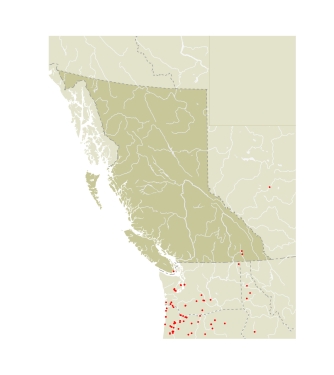American Ladies are strictly migratory into BC, where they rarely reproduce. Apparently they do not successfully hibernate as adults in BC, and are rarely encountered. The larvae live in silk nests among the leaves of the foodplants, and pupation often occurs in the nest. Both pupae and adults hibernate (Scudder 1893).
Outside BC larval foodplants include Anaphalis margaritacea, Antennaria parvifolia, A. plantaginifolia, Artemisia ludoviciana, Gnaphalium palustre, G. bicolor, G. obtusifolium, G. polycephalum, G. purpureum, Helianthus, Myosotis, and Senecio bicolor var. cineraria (Scudder 1889a; Emmel and Emmel 1962; Shapiro 1975b; Ferris and Brown 1981; Scott 1992). J.W. Cockle's record of nettle being used in BC (Jones 1936) is undoubtedly an error.
|
|
